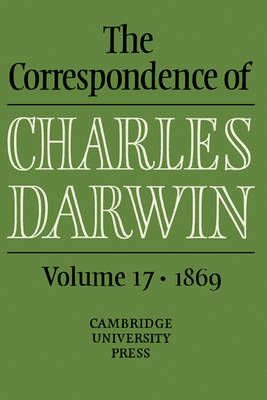
The Correspondence of Charles Darwin: Volume 17, 1869
Seiten
2009
Cambridge University Press (Verlag)
978-0-521-19030-5 (ISBN)
Cambridge University Press (Verlag)
978-0-521-19030-5 (ISBN)
Throughout 1869, Darwin continued to collect data for his two most significant books after Origin: The Descent of Man and Expression of the Emotions. Explorers, diplomats, and missionaries all over the world were politely encouraged to investigate, for example, how emotions were expressed in different cultures.
'I have always maintained that, excepting fools, men did not differ much in intellect, only in zeal & hard work; and I still think there is an eminently important difference'. Throughout 1869, Darwin continued to collect data for his two most significant books after Origin: The Descent of Man and Expression of the Emotions. Explorers, diplomats, and missionaries all over the world were politely encouraged to investigate, for example, how emotions such as surprise, anger and shame were expressed in different cultures. As Darwin's research on human evolution neared completion, he learned that Alfred Russel Wallace, the co-discoverer of the theory, had begun to raise questions about its application to certain aspects of human development, attributing these to the action of a 'higher power'. In his correspondence, Wallace alluded to his belief in spiritualism, which he fully believed to be open to scientific investigation, but which gave Darwin much pause.
'I have always maintained that, excepting fools, men did not differ much in intellect, only in zeal & hard work; and I still think there is an eminently important difference'. Throughout 1869, Darwin continued to collect data for his two most significant books after Origin: The Descent of Man and Expression of the Emotions. Explorers, diplomats, and missionaries all over the world were politely encouraged to investigate, for example, how emotions such as surprise, anger and shame were expressed in different cultures. As Darwin's research on human evolution neared completion, he learned that Alfred Russel Wallace, the co-discoverer of the theory, had begun to raise questions about its application to certain aspects of human development, attributing these to the action of a 'higher power'. In his correspondence, Wallace alluded to his belief in spiritualism, which he fully believed to be open to scientific investigation, but which gave Darwin much pause.
Frederick Burkhardt (1912–2007) was the founder of the Charles Darwin Correspondence Project, and the associated high profile book series The Correspondence of Charles Darwin (Cambridge University Press, 1985–the present). He was President of the American Council of Learned Societies from 1957 to 1974, and in 2003 was awarded the American Philosophical Society Thomas Jefferson Gold Medal for Distinguished Achievement in the Arts, Humanities, or Social Sciences.
List of illustrations; Frederick Henry Burkhardt (1912–2007); List of letters; Introduction; Acknowledgements; List of provenances; Note on editorial policy; Darwin/Wedgewood genealogy; Abbreviations and symbols; THE CORRESPONDENCE, 1869; Appendices; Bibliography; Index.
| Erscheint lt. Verlag | 9.7.2009 |
|---|---|
| Reihe/Serie | The Correspondence of Charles Darwin |
| Zusatzinfo | 12 Halftones, unspecified |
| Verlagsort | Cambridge |
| Sprache | englisch |
| Maße | 166 x 240 mm |
| Gewicht | 1240 g |
| Themenwelt | Naturwissenschaften ► Biologie ► Evolution |
| ISBN-10 | 0-521-19030-4 / 0521190304 |
| ISBN-13 | 978-0-521-19030-5 / 9780521190305 |
| Zustand | Neuware |
| Haben Sie eine Frage zum Produkt? |
Mehr entdecken
aus dem Bereich
aus dem Bereich
Komplette Neuübersetzung. Mit einem Nachwort von Josef H. Reichholf.
Buch | Hardcover (2018)
Klett-Cotta (Verlag)
CHF 67,20
Wie die Vernichtung der Arten unser Überleben bedroht - Der …
Buch | Softcover (2023)
Penguin (Verlag)
CHF 20,95


